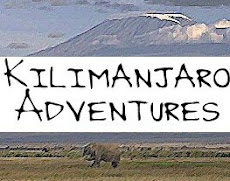
The final tier of outfitters in our tour of Kilimanjaro climbs are the low-end providers. The only time you're likely to run into one of these companies is if you're already local and just go with anyone you can find in Moshi or Arusha Tanzania when you get there.
Again, the biggest difference with this level of outfitter is security and comfort. With the lower-end outfitters you will have fewer porters and support staff and therefore less food and comfort gear. Where this really becomes a problem is with the porters themselves. Some outfitters don't provide any food on the climb for porters. Porters eat whatever you don't or go begging from other parties. Aside from the ethical issues, this is just plane dangerous. Now the people meant to support and protect you are already weak and under prepared themselves. If the weather turns bad porters might not have warm shelter.
I really don't recommend bargain hunting too much when planning to climb 19,340 feet above sea level where you'll find about half the oxygen typically needed to survive. Even if you're already local, take the time to research a few outfitters with good reputations or consult a respected travel guide that lists some reputable outfitters.







